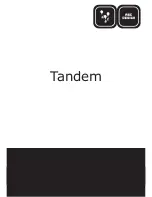
20
The MPPT charge controller has a 4-stage battery charging algorithm for a rapid, efficient, and
safe battery charging. They include: Bulk Charge, Boost Charge, Float Charge, and
Equalization.
Four Charging Stages
Temperature is a huge enemy of solar modules. As the environmental temperature
increases, the operating voltage (Vmp) is reduced and limits the power generation of the solar
module. Despite the effectiveness of MPPT technology, the charging algorithm will possibly
not have much to work with and therefore there is an inevitable decrease in performance.
This is why it is preferred to have PV modules be in cooler ambient temperatures for the
greatest boost.
In the chart above, the maximum power point at which the PV module delivers maximum
power (17V*5.8A) is observed, and the Rover Boost increases the voltage to Charge an
AGM 48V battery bank. The Rover Boost will continually recalculate the maximum power
voltage as operating conditions change and extract this power. The input power feeds a
switching type power converter which increases the voltage to the battery.
This is why it is preferred to have PV modules be in cooler ambient temperatures for the
greatest voltage boost.
Limiting Effectiveness
Maximum
Power Point
Current vs. Voltage (12V System)
Output Power (48V System)
Typical
Battery
Voltage Range
C
U
RRE
N
T
VOLTAGE
100W Solar
58.4V
55.2V
Rover Boost
48V AGM
10
15
5.88A
17
Battery
Voltage
Equalize
Boost
Float
Recharge
Bulk Charge
A
B
C
Constant charging
Float Charge
Boost
Time
Bulk
Battery
Current
Time
Max Current
Duration Time:2h
Battery
Voltage
Equalize
Boost
Float
Recharge
Bulk Charge
A
B
C
Constant charging
Float Charge
Boost
Time
Bulk
















































